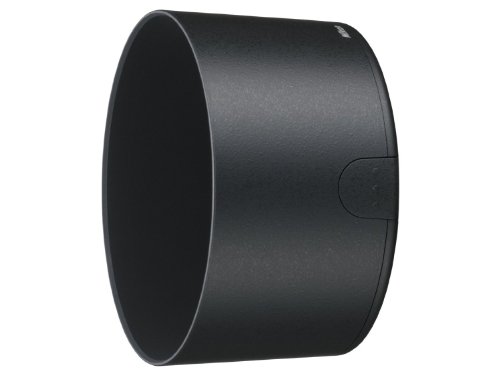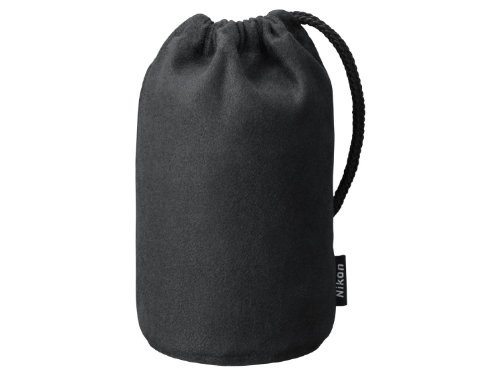Nikon AF-S DX NIKKOR 55-300mm f/4.5-5.6G ED VR Technical Review: The Ultimate Gateway to Super-Telephoto Photography
Introduction: Breaking the Boundaries of the Kit Lens
For every aspiring photographer who begins their journey with a Nikon DX-format DSLR, there comes a defining moment. It is the moment when the creative possibilities of their 18-55mm kit lens begin to feel like a creative cage. The distant bird on a branch, the peak action at a child’s soccer game, the candid portrait from across a park—these are the images that live in the imagination but remain tantalizingly out of reach, rendered as small, indistinct shapes in the frame. This is the moment when a telephoto zoom lens transitions from a luxury to a necessity. It is for this exact moment of creative evolution that Nikon engineered the AF-S DX NIKKOR 55-300mm f/4.5-5.6G ED VR. This is not just another lens; it is the key that unlocks the door to the thrilling world of super-telephoto photography, a world of compression, isolation, and intimate perspectives on distant subjects.
This lens represents one of the most significant and impactful upgrades a Nikon DX user can make. It is a powerful tool designed to bring the world closer, transforming your camera into a long-range creative instrument. It picks up precisely where the standard kit lens leaves off, providing a massive 5.5x zoom range that puts you right in the heart of the action. But this lens is far more than just a simple magnifier. It is a sophisticated piece of optical engineering, packed with a suite of Nikon’s core technologies that are essential for achieving sharp, clear images at such extreme focal lengths. It incorporates Nikon’s highly effective Vibration Reduction (VR) image stabilization to combat camera shake, a swift and silent Silent Wave Motor (SWM) for decisive autofocus, and a complex optical formula featuring specialized ED and HRI glass to ensure maximum clarity and color fidelity. It is a lens that democratizes super-telephoto photography, offering a level of performance and a suite of features once reserved for heavy and prohibitively expensive professional glass, all in a compact, lightweight, and incredibly affordable package.
In this exhaustive technical review, we will perform a granular dissection of the NIKKOR 55-300mm. We will analyze the physics of its optical design, deconstruct the mechanics of its stabilization and autofocus systems, and evaluate the real-world performance that has made it a perennial favorite and one of the top lenses in its price range. This is a deep dive for the discerning enthusiast who is ready to move beyond the basics and wants to understand the science behind capturing breathtaking images of the world from a distance.

A Deep Dive into the Key Features: A Technical Dissection of a Long-Range Optic
The NIKKOR 55-300mm f/4.5-5.6G ED VR’s status as a must-have lens is not based on a single specification, but on the intelligent and synergistic integration of multiple core Nikon technologies. We will now dissect each key feature from a technical perspective to understand its profound impact on the photographic process.
-
The Power of Reach: The 5.5x Super-Telephoto Zoom Range
The headline feature of this lens is its immense 5.5x telephoto zoom capability. The focal length range of 55mm to 300mm is specifically designed for Nikon’s **DX-format** cameras, which utilize an APS-C sized sensor. From an optical physics perspective, this smaller sensor introduces a 1.5x “crop factor” compared to a full-frame (FX) camera. This is not a detriment; for telephoto work, it is a massive advantage. This crop factor effectively multiplies the lens’s focal length, giving it a full-frame equivalent field of view of approximately 82.5mm to a staggering 450mm. This transformation is the key to the lens’s power. At its shortest end (82.5mm), it becomes a perfect portrait lens, providing a flattering perspective that is ideal for headshots and half-body shots with pleasing background compression. As you zoom through the range, you gain the power to isolate subjects from a distance.
At the maximum 300mm (450mm equivalent) setting, the lens becomes a true super-telephoto optic. This is the kind of reach required to fill the frame with a player on a sports field from the sidelines, to capture a detailed, frame-filling shot of a bird on a distant branch without disturbing it, or to pick out a single architectural detail on a building from a block away. This immense magnification allows the photographer to fundamentally change their relationship with their subjects, creating intimate, detailed, and impactful images of scenes that would be impossible to capture otherwise. The 5.5x zoom ratio itself speaks to its versatility, allowing for precise framing and composition across this entire extensive range, from portraiture to action to wildlife photography.
-
The Foundation of Handheld Sharpness: Nikon VR Image Stabilization
At super-telephoto focal lengths, the laws of physics become unforgiving. Even the slightest handshake or vibration from pressing the shutter button is magnified to the same degree as the image, resulting in destructive motion blur. This is why a powerful image stabilization system is not a luxury, but an absolute necessity. The NIKKOR 55-300mm incorporates Nikon’s highly acclaimed VR (Vibration Reduction) system. This is a sophisticated optical stabilization technology. Inside the lens, a pair of high-precision gyroscopic sensors continuously measure the angular velocity of any pitch and yaw movements (the primary axes of camera shake). This data is fed to a microprocessor, which then directs a dedicated group of lens elements—the VR group—to move in the opposite direction of the shake. This mechanical counter-movement effectively stabilizes the image projected onto the camera’s sensor, allowing for sharp handheld photos at shutter speeds far slower than would normally be possible.
While Nikon doesn’t specify the exact “stop” rating for this lens, similar VR II systems provide around 3.0 to 4.0 stops of correction. In practical terms, a 3-stop advantage means you can achieve a critically sharp handheld photograph at a shutter speed that is eight times slower (2³ = 8) than the traditional “1/focal length” rule would suggest. At 300mm, where you might normally need a shutter speed of 1/500s or faster, the VR system allows you to get a sharp shot at 1/60s. This is a game-changing capability, allowing for successful handheld shooting in overcast conditions or at dawn and dusk when wildlife is most active. A particularly advanced feature is the lens’s **Tripod Detection Mode**. The VR system is intelligent enough to recognize when it is mounted on a stable platform like a tripod. It then automatically adjusts its algorithm to counteract only the high-frequency vibrations from the camera’s own mirror slap, preventing the system from trying to “correct” for non-existent shake, which could actually introduce blur—a mark of a truly sophisticated stabilization system.

-
The Pursuit of Clarity: HRI and ED Optical Elements
Achieving sharpness and clarity across a long telephoto zoom range in a compact package is a monumental optical challenge. Nikon’s solution is a complex optical formula of 17 elements in 11 groups, which includes two types of highly advanced, specialized glass. First is the HRI (High Refractive Index) Lens Element. From a material science perspective, a high refractive index means the glass is capable of bending light more aggressively than standard optical glass. The inclusion of an HRI element is a key to modern lens miniaturization. It allows the optical engineers to achieve the desired telephoto focal length and correct for optical aberrations (like field curvature and spherical aberration) using fewer or smaller elements. This is a primary reason why the 55-300mm can be so much more compact and lightweight than older telephoto zoom designs.
The second, and perhaps more critical, component is the use of **2 Extra-low Dispersion (ED) Elements**. The primary purpose of ED glass is to combat **chromatic aberration**. As white light passes through a standard lens element, the different wavelengths (colors) of light are bent at slightly different angles, causing them to focus at different points. This optical error, known as chromatic dispersion, manifests in photographs as distracting color fringing (typically purple or green halos) along high-contrast edges. ED glass is a specialized optical material with a very low dispersion index. It minimizes this color separation, ensuring that all wavelengths of light are focused precisely on the same plane at the sensor. By using two of these elements, Nikon is able to achieve a high degree of chromatic aberration correction, resulting in images that are significantly sharper, have higher contrast, and display a more faithful and accurate color rendition, especially at the challenging 300mm end of the zoom range.

-
The Engine of Precision: The Exclusive Nikon Silent Wave Motor (SWM)
The autofocus motor is the heart of a modern lens, responsible for its speed and responsiveness. The NIKKOR 55-300mm features Nikon’s proven and highly effective SWM (Silent Wave Motor). This is a type of ultrasonic motor, a technology that represents a massive leap forward from older, gear-driven micro-motors. An SWM operates on the principle of piezoelectricity. It uses a set of ceramic piezoelectric elements that, when a voltage is applied, generate ultrasonic vibrations. These vibrations are used to create a traveling wave along a stator, which in turn drives a rotor that is coupled to the lens’s focusing group. This direct-drive system is characterized by two key performance attributes:
- Speed and Accuracy: The SWM provides fast, decisive, and highly accurate autofocus. It can move the focusing elements from the minimum focus distance to infinity with great speed, which is critical for capturing fleeting moments in sports and wildlife photography. The precision of the motor allows for a high degree of focusing accuracy, ensuring your subjects are rendered with critical sharpness.
- Silent Operation: As the name implies, the motor is virtually silent. The ultrasonic vibrations used for actuation are far outside the range of human hearing. This is a massive advantage in a number of scenarios. For wildlife photography, it allows you to acquire focus without startling your subject. For shooting video, it ensures that no distracting focusing noises are picked up by the camera’s internal microphone, allowing for clean, professional-sounding audio.
Pros: The Undeniable Technical Strengths
- Massive Super-Telephoto Reach: The 55-300mm focal length provides an immense 82.5-450mm equivalent field of view on DX cameras, perfect for sports, wildlife, and aviation photography.
- Highly Effective VR Image Stabilization: The optical VR system is a necessity at these focal lengths and performs brilliantly, enabling sharp handheld shots at slow shutter speeds in challenging light.
- Excellent Image Quality for its Class: The advanced optical formula with two ED elements and one HRI element delivers sharp, high-contrast images with well-controlled chromatic aberration.
- Fast and Silent Autofocus: The Silent Wave Motor (SWM) provides the quick, quiet, and accurate autofocus performance required for capturing action and for shooting video.
- Compact and Lightweight Design: Thanks to the HRI element and modern design, the lens is surprisingly compact and light for a super-telephoto zoom, making it an excellent travel companion.
- Incredible Value Proposition: Offers a powerful combination of reach, optical quality, and modern features at an extremely accessible price point, making it one of the best telephoto values for the Nikon DX system.
Cons: Important Technical Considerations and Limitations
- Variable Aperture: The lens has a variable maximum aperture of f/4.5-5.6. This means that as you zoom towards 300mm, the aperture gets smaller, letting in less light. This makes it less suitable for low-light indoor sports than a much more expensive f/2.8 or f/4 constant-aperture lens.
- Autofocus Speed vs. Pro Lenses: While the SWM is excellent for its class, it does not have the top-tier speed and tracking performance of the advanced motors found in Nikon’s professional telephoto lenses.
- Plastic Construction and Mount: To keep the weight and cost down, the lens barrel and, importantly, the lens mount are made from a durable polycarbonate plastic, not the metal construction and mount found on higher-end lenses.
- Not Weather Sealed: The lens does not feature any rubber gaskets or weather sealing, so it should be used with caution in dusty or wet conditions.
- DX-Format Only: This lens is designed specifically for Nikon’s DX (APS-C) cameras and is not recommended for use on full-frame (FX) cameras, as it will force the camera into a low-resolution crop mode.
Conclusion: The Single Most Empowering Upgrade for a Nikon DX Photographer
The Nikon AF-S DX NIKKOR 55-300mm f/4.5-5.6G ED VR is a triumph of accessible performance and a product that perfectly understands its intended user. It is, without exaggeration, the most logical, powerful, and creatively liberating upgrade for any Nikon DX DSLR owner who has felt constrained by their kit lens. It is a lens that literally opens up new worlds, transforming the user from a spectator into an active participant in distant scenes. The massive reach it provides is not just a specification; it is a gateway to new genres of photography that are simply impossible without it. Nikon has brilliantly supported this reach with the essential technologies required to make it usable and effective. The VR system is a non-negotiable necessity that performs admirably, the SWM autofocus is quick and quiet, and the advanced optical design delivers a level of sharpness and clarity that is truly exceptional for its price point.
While it makes intelligent and necessary compromises in aperture speed and build materials to achieve its incredible portability and affordability, these trade-offs are minor when weighed against the immense capability it provides. This is the lens that will capture your child’s first goal from across the field. It’s the lens that will bring a distant eagle into clear view. It’s the lens that will turn a vacation snapshot of a mountain into a detailed, dramatic landscape. For the Nikon DX enthusiast looking to take the single biggest step forward in their creative journey, the 55-300mm VR is not just a top choice; it is the essential choice. It has rightfully earned its status as a best-seller and receives our highest and most enthusiastic recommendation.
Frequently Asked Questions (FAQs)
- Q1: What is the main technical difference between this 55-300mm lens and the cheaper, non-VR AF-P 70-300mm lens?
- A: There are several key differences. This 55-300mm lens has Nikon’s proven SWM motor, which is compatible with a wider range of older Nikon DSLRs. The AF-P lenses use a newer pulse motor that is not compatible with some older camera bodies. Most importantly, this lens has Vibration Reduction (VR), which is absolutely critical for handheld shooting at 300mm. The non-VR 70-300mm is much more difficult to use handheld and achieve sharp images.
- Q2: Can I use this lens on my new Nikon Z series mirrorless camera, like a Z50 or Z fc?
- A: Yes, absolutely. To use this F-mount DSLR lens on a Z-mount mirrorless camera, you will need the Nikon FTZ or FTZ II Mount Adapter. The lens will perform flawlessly with the adapter, retaining full autofocus, VR, and electronic communication capabilities. It’s an excellent and affordable way to get super-telephoto reach on the Z system.
- Q3: Why is the lens mount made of plastic and is it a problem?
- A: The mount is made of a high-quality, durable polycarbonate to reduce both weight and cost. For its intended use with lightweight DX-format cameras, it is perfectly durable and reliable. Professional lenses used with heavy pro bodies use metal mounts for increased long-term durability against the higher stress, but for an enthusiast lens like this, the plastic mount is not a practical concern.
- Q4: Is this lens good for shooting indoor sports, like a basketball game in a gym?
- A: It can be challenging. The variable f/4.5-5.6 aperture is relatively “slow,” meaning it doesn’t let in a lot of light. In a typically dim school gymnasium, you would need to use a very high ISO to achieve a shutter speed fast enough to freeze the action, which can result in grainy images. For indoor sports, a much more expensive 70-200mm f/2.8 lens is the professional tool of choice.
- Q5: What does the “G” in the lens name signify?
- A: The “G” designation in a NIKKOR lens name means that the lens does not have a physical aperture control ring. The aperture is controlled electronically via the command dials on the camera body. This is standard for all modern Nikon AF-S lenses.
- Q6: What is the minimum focus distance, and is this lens good for macro photography?
- A: The minimum focus distance is a respectable 4.6 feet (1.4 meters). However, this is not a macro lens. Its maximum magnification ratio is approximately 0.28x. While you can get nice close-up shots of larger subjects like flowers or butterflies from a distance, it cannot achieve the true 1:1 life-size magnification of a dedicated Micro-NIKKOR macro lens.
- Q7: Does the front of the lens rotate when it focuses?
- A: No, the front element of the lens does not rotate during focusing. This is an important feature, as it means you can easily use circular polarizing filters or graduated neutral density filters without them changing their orientation as the lens focuses.







